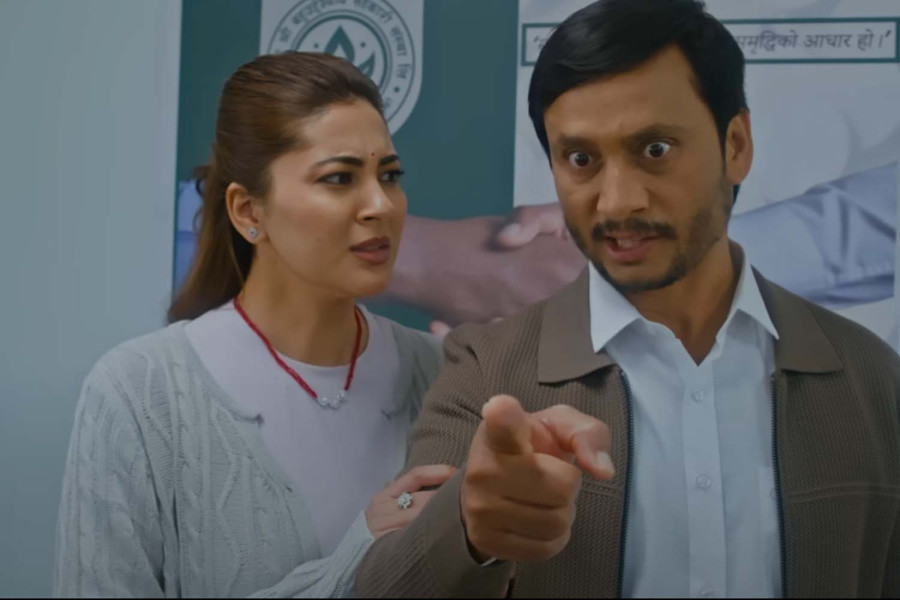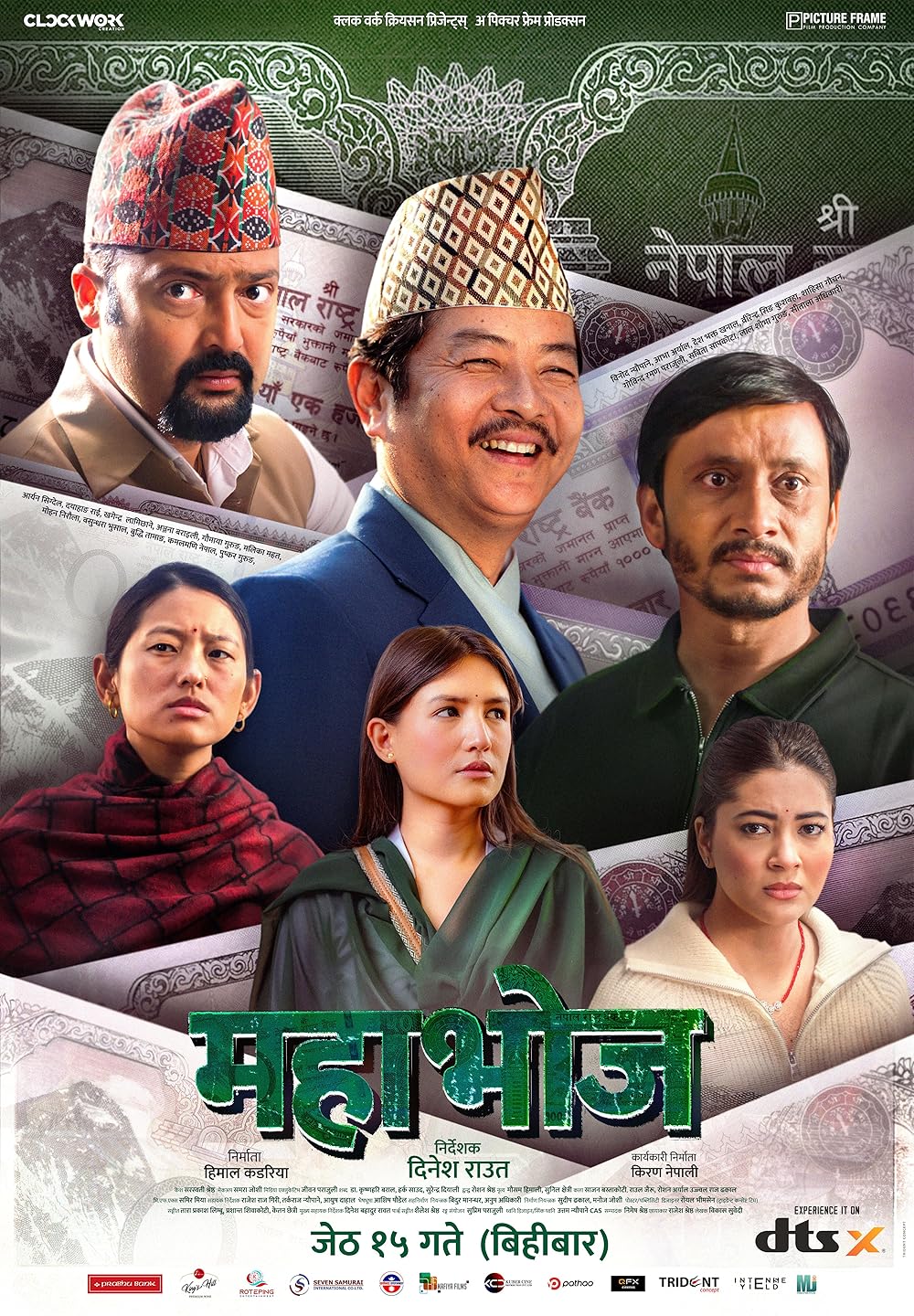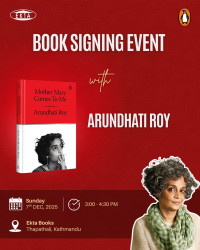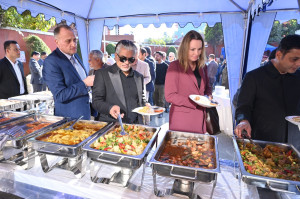Culture & Lifestyle
In ‘Mahabhoj’, corruption is personal
Director Dinesh Raut’s new film explores how ordinary lives are crushed beneath institutional betrayal.
Skanda Swar
Nepali cinema continues its gradual evolution, and while progress remains uneven across the industry, films addressing social issues have found their voice. ‘Mahabhoj’ joins this growing conversation, tackling themes familiar in contemporary Nepali filmmaking: corruption, political manipulation, and the struggle of ordinary citizens against systemic injustice. Much like other recent social dramas, ‘Mahabhoj’ doesn’t shy away from exploring the harsh realities many Nepalis face daily.
The film follows Biraj and his wife, who travel from Kathmandu to their village to secure money for their apartment loan payments. When Biraj approaches his hardworking father for help, he discovers that his father's life savings, stored in a life insurance bank, are trapped in a web of corruption. The plot unfolds layers of institutional betrayal as it's revealed that the bank’s funds have been secretly diverted to finance election campaigns. Chandra Kaji, the organisation’s manager, finds himself in a dire predicament, facing pressure from depositors demanding their money back, while the ward head, a local politician, has embezzled the funds.
Initially, Chandra Kaji tries to manage the crisis by paying small amounts from his salary, but the scale of the corruption overwhelms him. The story takes a turn when the corrupt ward head manipulates the situation, framing Chandra Kaji for money laundering while destroying evidence of his involvement. This betrayal sends Chandra Kaji into depression and spurs Biraj to investigate the truth. The narrative builds tension as Biraj uncovers the real conspiracy, leading to a powerful climax.
Like many contemporary Nepali films, ‘Mahabhoj’ explores the tension between urban aspirations and rural values, suggesting that community-based living is more fulfilling than the material pursuits of city life.
The ensemble cast delivers decent performances that effectively serve the story. Dayahang Rai brings his characteristic authenticity to his role, playing his part well within the film's social drama framework. His performance maintains the reliability audiences expect from him, though it doesn't particularly challenge his established range.
Gaumaya Gurung as Dhanmaya provides a solid supporting performance that complements the film's narrative without major missteps. Khagendra Lamichhane as Biraj handles the film's emotional demands competently, portraying a man's journey from desperation to determination.
Anjana Baraili as Biraj's wife delivers a decent supporting role, adequately portraying her character's support through the couple's struggles and life changes. Overall, while no performance stands out as exceptional, the entire cast plays their parts well enough to maintain the story's credibility and emotional impact. The acting quality reflects the steady, if unremarkable, standard that has become common in socially conscious Nepali cinema.
Director Dinesh Raut demonstrates competent handling of the social drama, maintaining a pace that works well for the story. While the film occasionally feels slow in certain segments, it compares favourably to most local productions by keeping viewers engaged. The pacing avoids the common pitfall of leaving audiences bored, striking a reasonable balance between character development and plot progression. Raut manages to navigate the complex narrative without losing momentum during crucial story beats, though the film doesn't particularly innovate in its directorial approach.
The cinematography stands out as one of the film's stronger technical aspects. The visual quality is good, with clear, crisp imagery throughout. There are no pixelated or blurry sections that might distract from the viewing experience. The camera work maintains professional standards, effectively capturing both intimate character moments and broader scenes.
The colour palette and grading choices reflect the film's serious subject matter while maintaining visual appeal, effectively supporting the mood and tone throughout the narrative.
The dialogue delivery is handled quite nicely throughout the film. The cast delivers their lines naturally, maintaining the authenticity needed for a social drama. The conversations feel grounded and believable, helping viewers connect with the characters' situations without feeling forced or theatrical. This naturalistic approach has become a hallmark of better Nepali social dramas. The film features only one song, ‘Makhkhai Pare’, which serves the narrative appropriately without overwhelming the story. The minimal use of songs works in the film's favour, allowing the social drama to maintain its serious tone. The single track fits well within the context and doesn't feel like an unnecessary addition to the plot. This restrained approach to music reflects a growing maturity in Nepali filmmaking, where songs serve the story rather than interrupt it.

The film exposes how political campaigns are secretly funded through public money, a reality many Nepali films have explored in various forms. The story shows how trusted financial institutions can become tools of exploitation. Chandra Kaji’s predicament illustrates how corrupt leaders often blame subordinates for their crimes, while the villagers' united stand demonstrates the power of collective action against injustice. The narrative reinforces that the truth eventually surfaces despite attempts to hide corruption. These themes aren't unique, as Nepali filmmakers have addressed them across multiple productions. What matters is how effectively the film presents these familiar issues.
The story maintains a strong logical progression, with each revelation building naturally upon the previous one. The character arcs are well-developed, particularly Biraj's transformation from a desperate loan seeker to an investigator seeking justice, and Chandra Kaji's journey from victim to vindicated community member. The film's resolution feels earned rather than convenient, with the community's decision to trust Chandra Kaji and expose the ward head's corruption.
‘Mahabhoj’ succeeds as a competent entry in Nepal's growing catalog of socially conscious cinema. Clock Work Creation has produced a film that addresses serious issues while maintaining narrative engagement, though it doesn't particularly distinguish itself from other films tackling similar themes. Director Raut and his cast have created a work that speaks to current social realities while telling a compelling human story, even if the approach feels familiar to regular viewers of Nepali social dramas.
While it may not break new ground thematically, it contributes to an important dialogue about the issues facing contemporary Nepal. For audiences interested in socially conscious cinema, ‘Mahabhoj’ offers a solid, if unsurprising, viewing experience that reinforces rather than challenges the established patterns of Nepali social commentary filmmaking.
The film demonstrates competent technical execution, particularly in its cinematography, with decent ensemble performances that serve the story well. The logical narrative progression and believable character development work in its favour, along with authentic dialogue and natural delivery. However, the occasional pacing issues, though better than many local productions, remind viewers of common challenges in Nepali filmmaking.
The predictable resolution follows established patterns in Nepali social dramas without transcending them. The film works well within established conventions without transcending them, contributing solidly to ongoing conversations about Nepal's social and political realities.
Mahabhoj
Director: Dinesh Raut
Cast: Gaumaya Gurung, Dayahang Rai, Anjana baraili, Khagendra Lamichhane
Duration: 123 minutes
Year: 2025
Language: Nepali




 9.12°C Kathmandu
9.12°C Kathmandu













%20(1).jpg&w=300&height=200)

